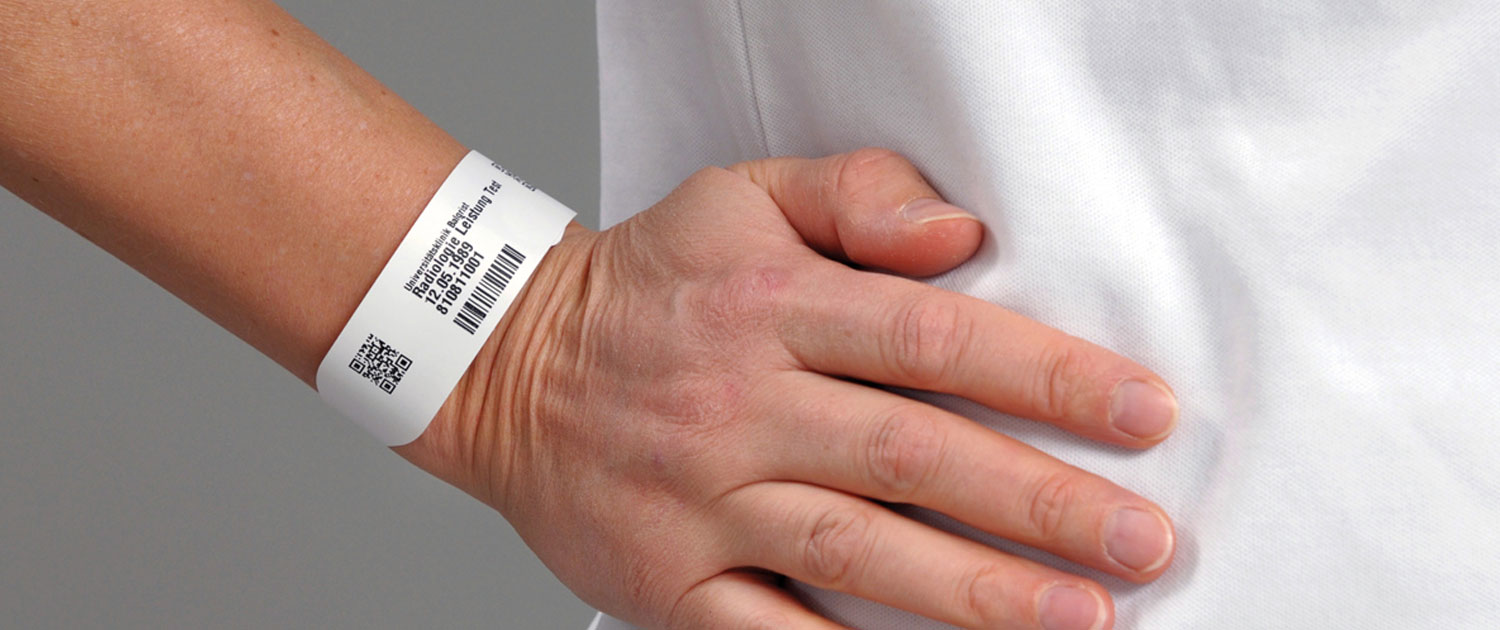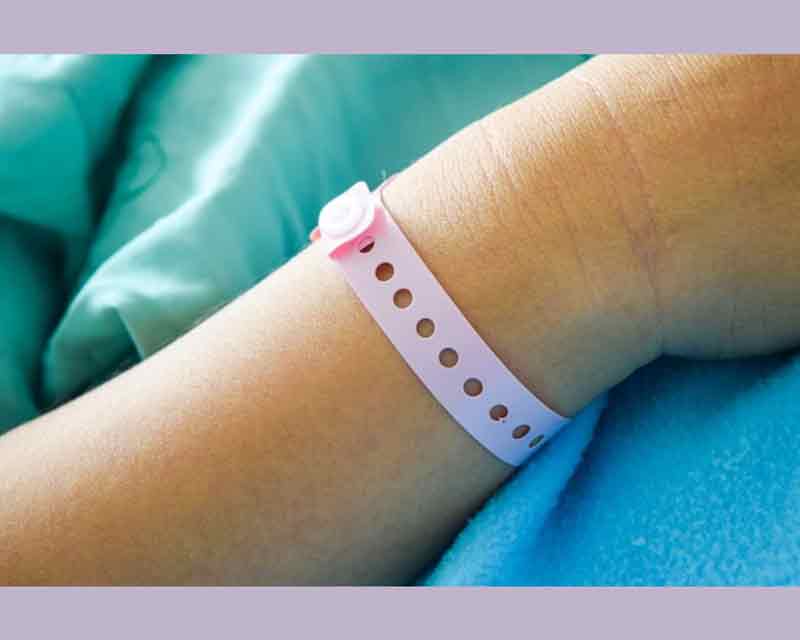The Role of Patient Identification Band in Streamlining Hospital Operations
The Role of Patient Identification Band in Streamlining Hospital Operations
Blog Article
Exploring the Numerous Types of Patient Identification Band Used in Medical Facilities
In the intricate world of health care, the vital duty of Patient Identification bands commonly goes undetected. These bands, differing from easy paper wristbands to innovative RFID bands, create the foundation of Patient security methods, guaranteeing precision in Patient Identification. The substantial variety of these bands, each with its special advantages and limitations, is usually ignored. As we navigate through this subject, one might gain insight right into the refined intricacies and critical value of such bands in medical facilities.
Recognizing the Importance of Patient Identification Bands
While they may seem like mere accessories, Patient Identification bands play a vital role in clinical centers. These bands offer as an important tool for confirming Patient identification, protecting against medical errors related to misidentification. Patient Identification bands also help in simplifying administrative tasks, making certain precise record-keeping and invoicing.
Standard Paper Wristbands: Their Usage and Limitations
Conventional paper wristbands have been a staple in Patient Identification across different clinical facilities. While their use is extensive, they harbor certain constraints that might influence their efficiency in Patient monitoring. This area will concentrate on the extent of their application and the intrinsic drawbacks related to their usage.
Paper Wristbands: Usage Scope
In the world of Patient Identification, paper wristbands have actually long held an important duty. These bands are normally made use of in outpatient setups, where the Patient's keep is short-lived. Despite advancements in innovation, the humble paper wristband stays a reputable and cost-efficient option for Patient Identification in numerous healthcare scenarios.
Limitations of Paper Wristbands
Despite their extensive usage, paper wristbands are not without their drawbacks. In enhancement, paper wristbands frequently do not have the technological abilities of even more contemporary choices, such as barcoding or RFID chips, limiting their capability to simply showing written info. Paper wristbands can create pain or skin irritability to some people, particularly when used for prolonged periods.
Barcoded Wristbands: Innovations in Patient Identification
While Patient Identification has actually long been an important aspect of healthcare, the introduction of barcoded wristbands symbolizes a substantial leap forward. These bands leverage the simpleness of barcoding technology, enabling for Patient information to be promptly scanned and accessed. They improve the rate and accuracy of Patient Identification, reducing the danger of medical mistakes connected to misidentification. Barcoded wristbands are cost-efficient, very easy to generate, and get rid of handwriting mistakes common with hands-on systems. Nevertheless, they are not without limitations. While they provide improvements over typical bands, the barcode can become smudged or used, making it unreadable. Regardless of this, barcoded wristbands remain a vital tool in modern-day health care settings, signifying the crossway of technology and Patient care.
Superhigh Frequency Identification (RFID) Bands: an Action Towards Futuristic Health Care
The advancement of Patient Identification bands has produced the development of Superhigh frequency Identification (RFID) Bands (patient identification band). These cutting-edge gadgets existing crucial benefits for healthcare facilities, supplying a much more reliable and technically progressed ways of Patient Identification. The implementation of RFID in medical care is a substantial step in the direction of a much more futuristic approach to Patient monitoring and safety
Recognizing RFID Bands

RFID Bands: Secret Advantages
Embracing a future where innovation and medical care merge, superhigh frequency Identification bands offer a number of key benefits. Largely, these bands boost Patient safety and security by giving accurate, instantaneous Identification, consequently decreasing medical errors. RFID bands can keep a huge amount of Patient data, consisting of clinical background and allergies, allowing individualized care. They also enhance management jobs, as the automated information entry changes hands-on procedures, enhancing performance try this web-site and reducing documentation. RFID bands use real-time tracking of people, critical in risky environments such as surgical procedure or intensive care. Last but not least, these bands are sturdy and resistant to ecological aspects, guaranteeing constant capability. Generally, RFID bands represent a considerable innovation in Patient Identification modern technology, profiting both clients and doctor.
Implementing RFID in Medical Care
As we enter a technologically innovative age, the execution of RFID bands in medical care comes to be increasingly crucial. These bands give a smooth means to track and determine people, ensuring their safety and boosting efficiency in therapy procedures. RFID bands use various benefits over standard Identification methods. They can save a vast amount of information, including the Patient's medical history and treatment plans, which can be easily accessed by healthcare providers. This data helps physicians make informed decisions concerning the Patient's treatment plan. In addition, RFID bands reduce clinical mistakes by offering exact Patient Identification, which is important in stopping misdiagnosis or wrong medication management. Therefore, the implementation of RFID bands is a significant action in the direction of boosting Patient safety and healthcare shipment.

Color-Coded Wristbands: Helping in Quick and Accurate Medical Diagnosis
In the dynamic atmosphere this of a medical facility, color-coded wristbands have become essential tools for swift and accurate Identification of a patient's medical problem. These wristbands, used by individuals, bring certain colors that correspond to various medical conditions or statuses. As an example, red could indicate allergy dangers, while yellow might represent a fall threat. This system is made to use prompt aesthetic signs to health care companies, improving Patient security and care quality. In emergency circumstances, the usage of these wristbands permits rapid decision-making. Nonetheless, the efficiency of color-coded wristbands relies on the uniformity of shade analysis throughout healthcare institutions, needing common requirements for regular application.
Strategies for Reliable Execution and Monitoring of Patient ID Bands
Attaining optimum use Patient Identification bands demands a well-structured strategy for their implementation and management. The initial step includes training all wellness personnel on the value of appropriately applying and reviewing these bands. Second of all, healthcare facilities need to standardize the usage of ID bands throughout all divisions, ensuring harmony and decreasing inconsistencies. Regular audits needs to be carried out to verify adherence to policies and to rectify any type of variances. Patient education is also crucial; individuals must comprehend the function of the bands and the need for their consistent wear. patient identification band. Last but not least, it's necessary to have a backup strategy in location, such as barcode scanning or biometrics, to ensure that Patient Identification is never endangered.
Conclusion
Patient Identification bands are critical in clinical centers to make sure security and precision. Effective implementation and monitoring of these bands can substantially reduce medical mistakes, increase effectiveness, and enhance general Patient treatment.
These bands, differing from simple paper wristbands to sophisticated RFID bands, form the news foundation of Patient safety and security protocols, ensuring accuracy in Patient Identification.The evolution of Patient Identification bands has actually brought regarding the appearance of Radio Regularity Identification (RFID) Bands. In general, RFID bands represent a significant improvement in Patient Identification modern technology, profiting both people and medical care providers.
RFID bands decrease clinical mistakes by providing precise Patient Identification, which is vital in preventing misdiagnosis or incorrect medication management. Patient education is likewise critical; individuals must understand the objective of the bands and the demand for their continuous wear.
Report this page